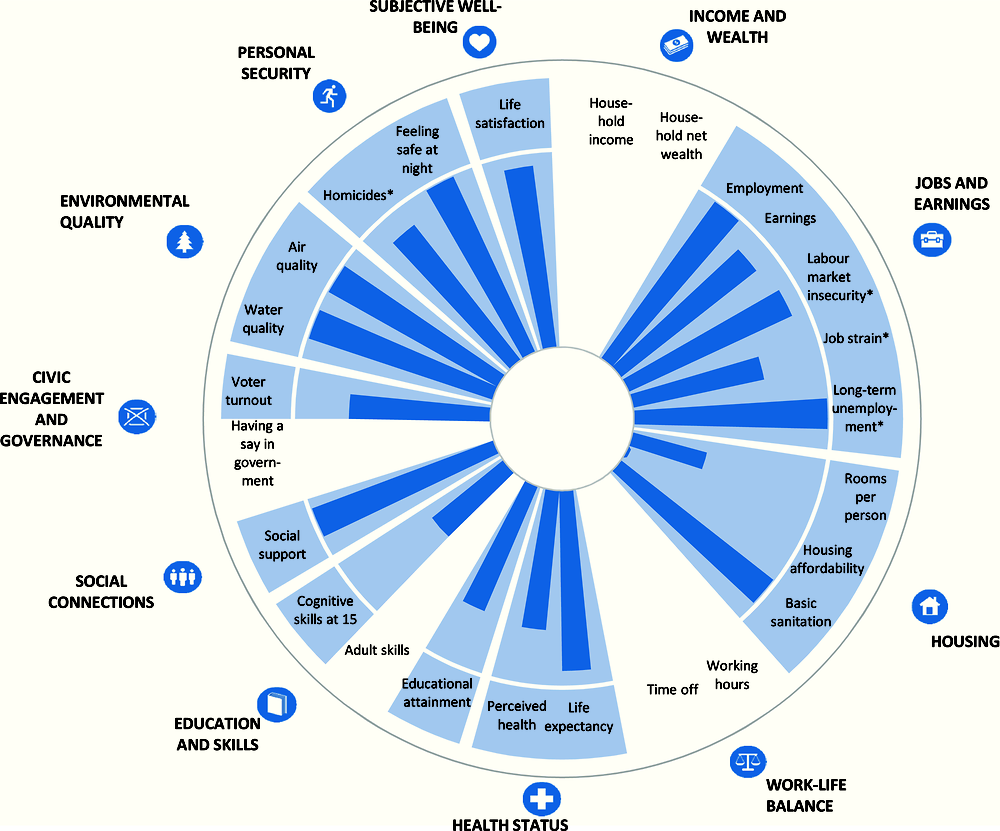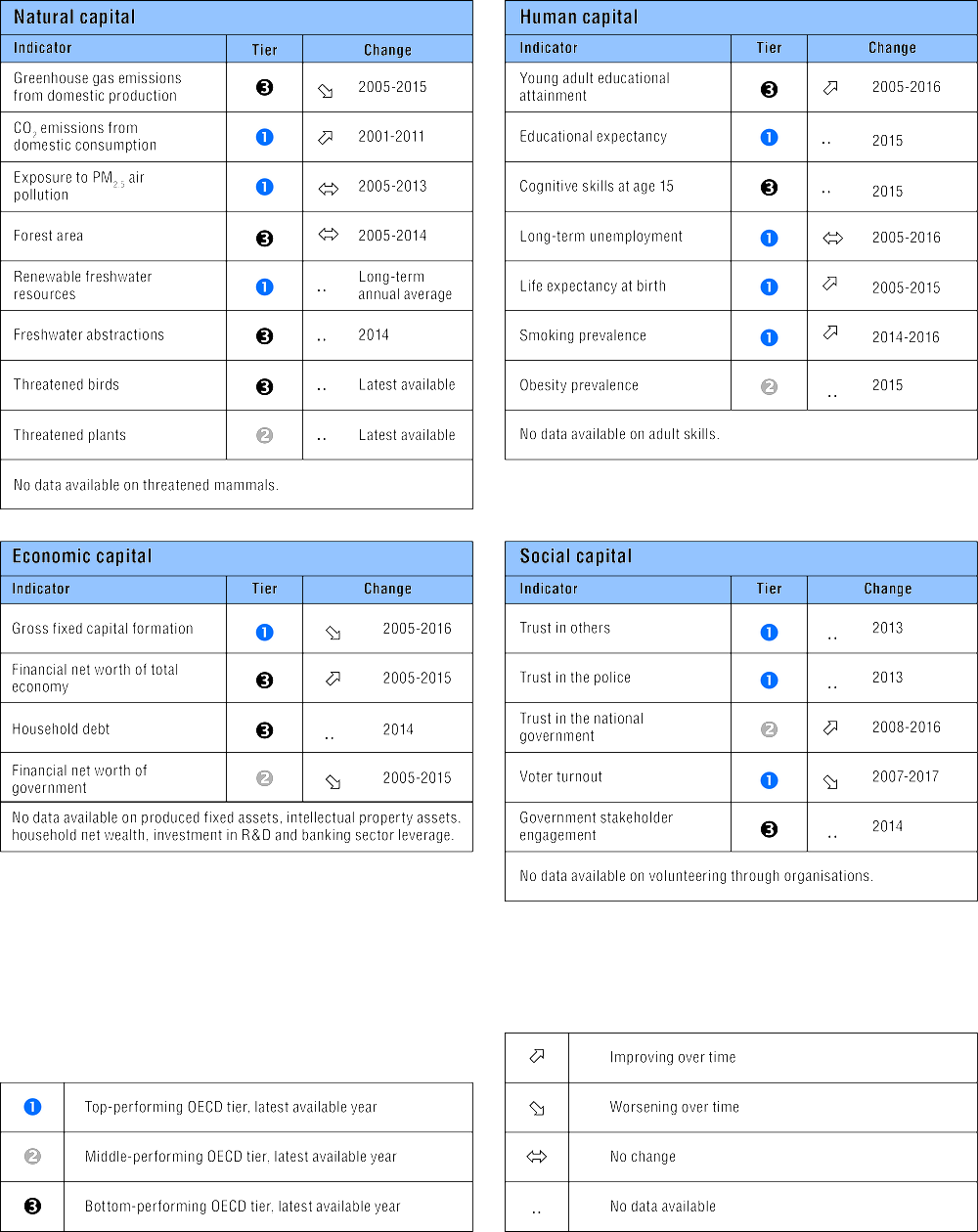How's life in Iceland?
In general, Iceland performs well across the different well-being dimensions relative to other OECD countries. 86% of the Icelandic population aged 15-64 was in employment in 2016, the largest share in the OECD, and average earnings are in the top tier of the OECD. Iceland is the OECD’s top performer in terms of environmental quality: air quality (measured as average exposure to PM2.5 air pollution) is the best in the OECD, and almost everybody in Iceland is satisfied with their local water quality. 98% of Icelanders report that they have friends or relatives whom they can count on in times of trouble, the highest share in the OECD. Personal security and life satisfaction are also areas of comparative strength. In terms of housing conditions, access to basic sanitation is high, but Icelanders spend a higher proportion of their disposable income on housing costs (24%) relative to the OECD average (21%), making housing affordability in Iceland a clear area of comparative weakness.


